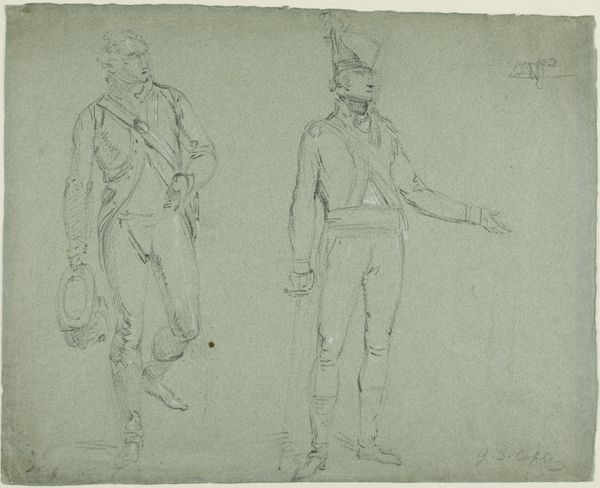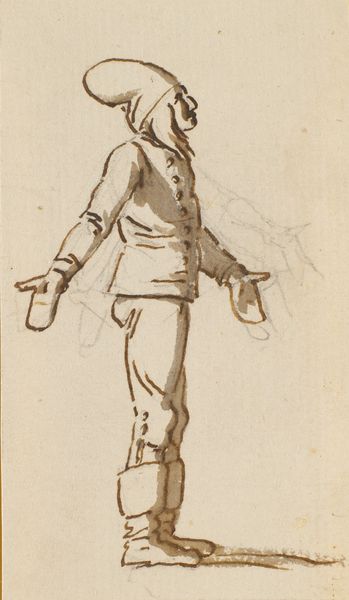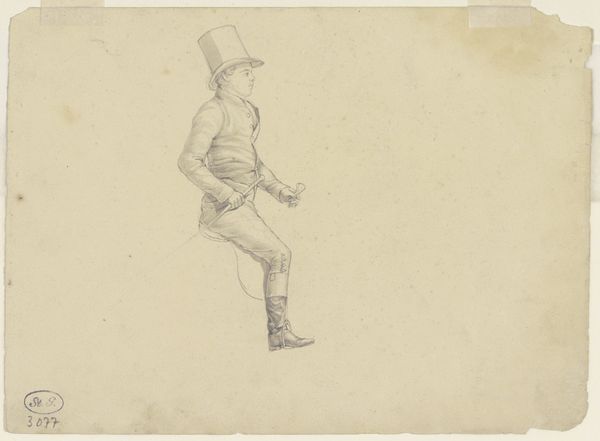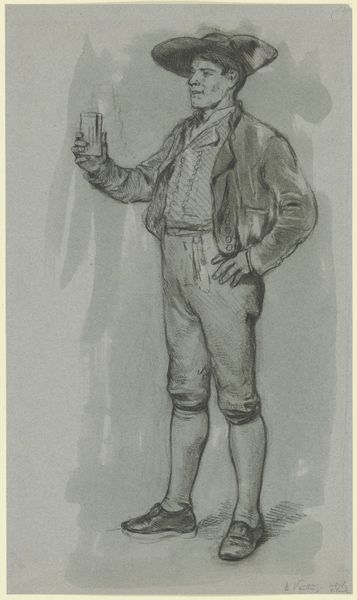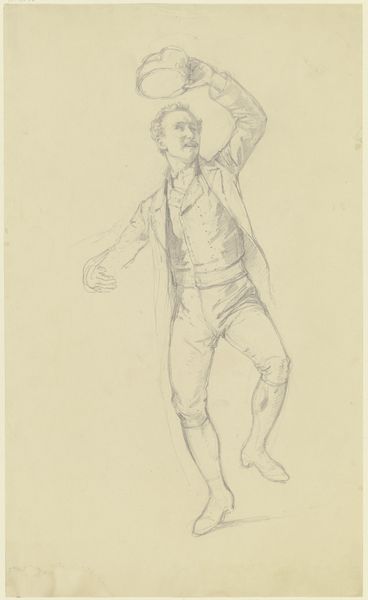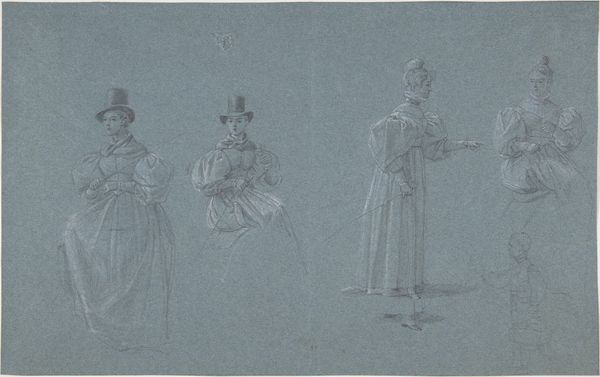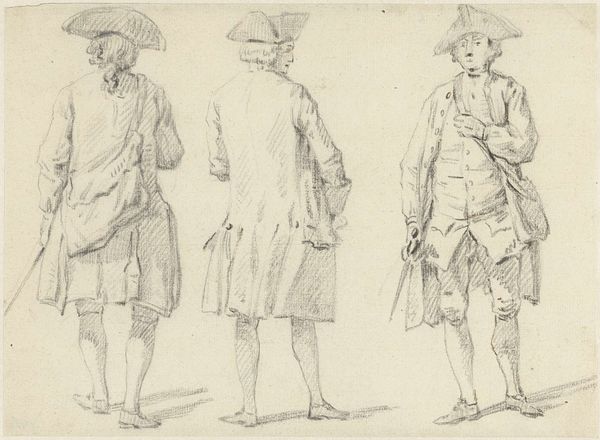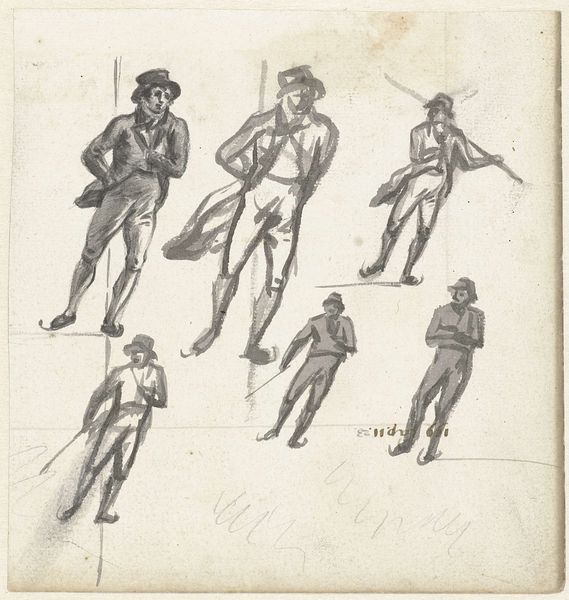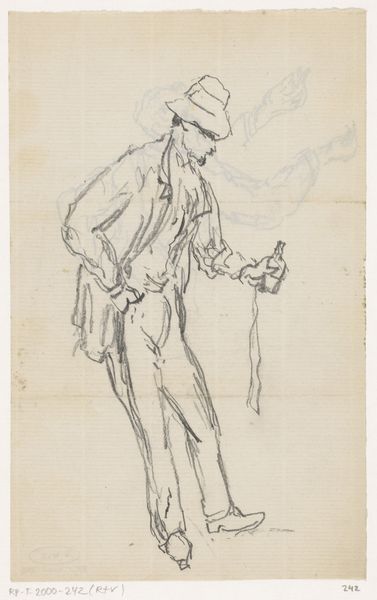
drawing, print, pencil
#
portrait
#
drawing
# print
#
figuration
#
romanticism
#
pencil
#
sword
Dimensions: sheet: 7 1/16 x 10 5/8 in. (18 x 27 cm)
Copyright: Public Domain
Curator: Here we have "Three studies on a man on a saddle," a drawing attributed to Wilhelm von Kobell, created sometime between 1766 and 1853. Editor: My initial impression is restraint and careful observation. It's delicate. I am particularly drawn to the grey-blue paper— it serves as a quiet backdrop. The figure almost fades into the sheet as the lines and the hue echo each other. Curator: Indeed, it's quite subtle. Kobell presents us with three studies of the same rider, each offering a slightly different perspective or action. There's the sword he's holding which could be a symbol of rank or authority. I read them as different facets of military identity during the Romantic era, capturing a sense of individualized stoicism within a highly structured environment. Editor: You’re right, seeing the repetition emphasizes the material process, the working of the pencil over paper, allows the artist to experiment, to correct and redefine his marks, searching to solidify form. Also I wonder about the source of the paper and where the pencils were crafted. Curator: That makes me consider the historical context: pencils becoming increasingly refined instruments and how paper was treated in different settings during this time period. Do you think that Kobell would have thought about that when he chose the paper or perhaps when it was initially produced? Editor: It's impossible to know Kobell’s exact thoughts, but as a materialist, it forces the discussion, because it acknowledges the context, the environment of the making as well as its economic impact. By understanding where and how the piece was made we see a direct connection of artistic practice, artistic labour, to society at large. Curator: I can see how focusing on the material illuminates the cultural context so thoroughly, but considering this through the prism of portraiture allows a look into an archetypal solider, representing both a historical moment and a cultural ideal. Editor: True. Seeing art with an eye towards labor and means broadens the interpretation in really wonderful ways, I think. Curator: Yes, our discussion reminds us how deeply entwined an image, regardless of how simple it might appear, it reflects a confluence of symbolic expression and cultural implications.
Comments
No comments
Be the first to comment and join the conversation on the ultimate creative platform.
